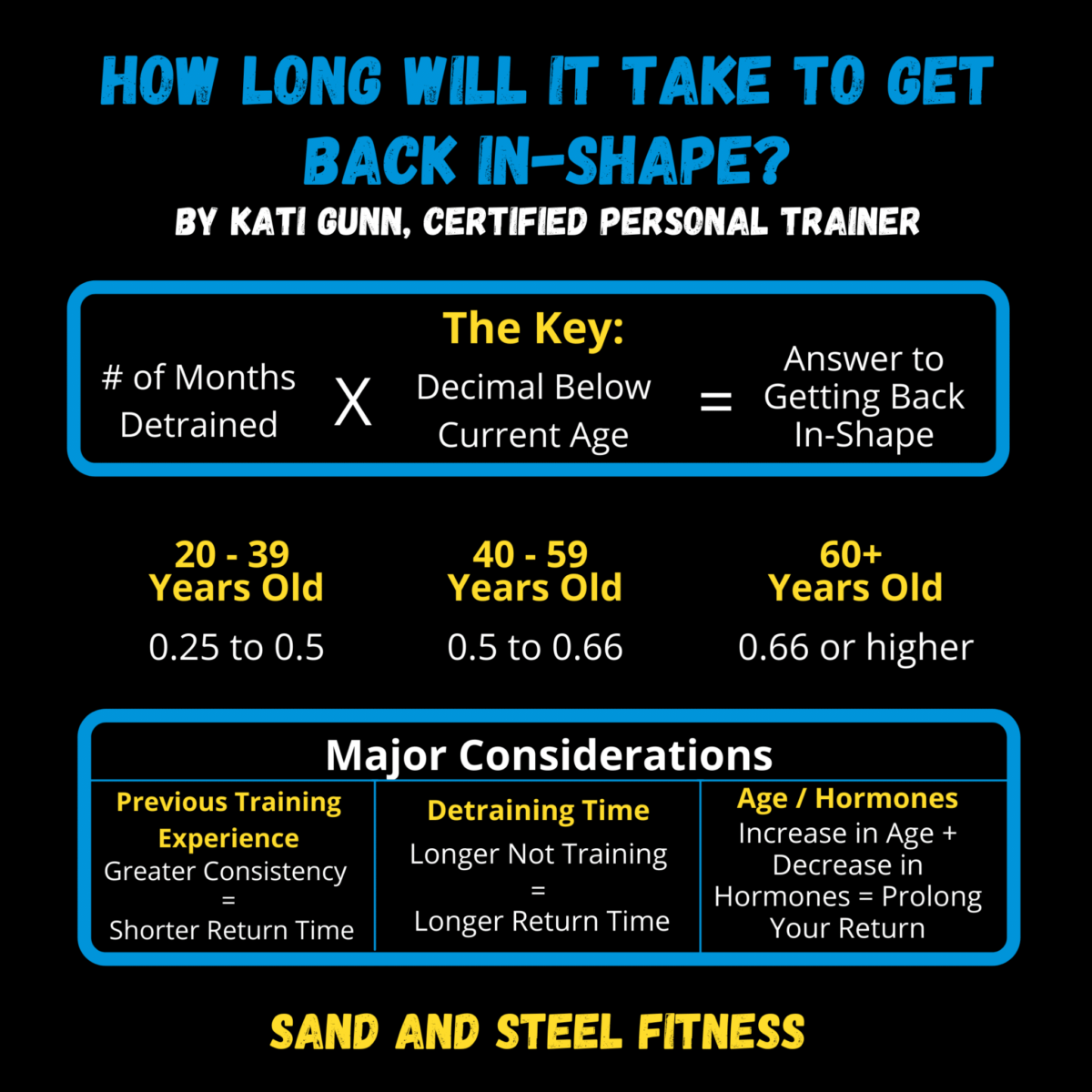How long does it take to get back in shape? We analyze this question across different ages, gender, and skill levels to distill a clear answer.
To help you understand how I arrived at these answers, I will explain the process. I reviewed other scientific research on this specific topic and others that would pertain to this question. The first study involved mice being trained in a lab for eight weeks, going through a 20-week detraining, and one group was returning for eight weeks. Next, I reviewed two separate studies on males and females from 20-30 years old and 65 to 75 years old. Which required them to train for nine weeks, detrain for 31 weeks, and tested to see if muscle size and strength, among other factors, were retained. Then I asked the question at what age do humans start to lose muscle and the annual percentage, which required me to review a few different studies on that information. After reviewing all information and working with various athletes, I came to the following conclusion.
If you are:
20-39 years old, it will take you ¼ to ½ the time you have gone through detraining.
40-59 years old, it will take you ½ to 2/3rds of the time you have gone through detraining.
60+ years old, it will take you 2/3rds of the time you have gone through detraining.
I will provide you with three different examples.
- Alice, the 26-year-old female, was a basketball player and spent four days out of every week in the weight room from 12 to 22. She has stopped playing basketball and working out for four years. Now she wants to get back in shape. It will take her 1 to 2 years to return to that similar physical fitness level.
- Todd is a 55-year-old male and participated in CrossFit 3 days a week from 20 to 35 but stopped having time to train when his kids started playing sports. Now that they are older, he has more time and wants to get back in shape. It will take Todd about 5 to 7 years to return to his previous level.
- Jamie is a 72-year-old female who went to the gym two days a week from 16 to 42. She now desires to get back to playing tennis twice a week but wants to get stronger, so she does not hurt herself. To improve her strength to where it was when she was 42, it will take her at least 20 years.
As you read through this, you probably have one major question.
Why does it take Jamie longer to return to being in shape than Todd or Alice?
There are a few different reasons.
First, Jamie is 72 and has already gone through menopause, causing her estrogen levels to decrease drastically. Estrogen is vital in improving muscle quality while training. The same goes for a male’s testosterone level, which starts to decline by 40.
Second, she is past the age of 50-years-old. Science has determined that every year after 50, the cross-sectional area, or size of your muscle cells, decreases by around 1% annually.
Third, as your body ages, other risk factors occur because of cellular decay, like increased inflammation, which makes a recovery for a workout longer. A neurological decline can increase an individual’s risk for downward movement and decreased protein synthesis.
Todd’s return will be affected by all these same factors, but not as extensively has Jamie because of her older age.
You must know, these numbers cannot be exact, only estimates because science has yet to conduct an experiment with such magnitude and specificity. You will also notice that all of the examples provided have a long and consistent training history, which is a significant contributor to their return. None of them sustained significant injuries or medical condition(s).
-
What does that mean for you if you do not fit into the above category (i.e., you have a medical condition, significant injury, or both?
Getting back into shape may take you longer, BUT it does not mean it is impossible. The human body retains muscle quality and neuromotor pathways that are key to training (i.e., muscle memory). Meaning you will need to understand those contributing factors, develop a plan with a qualified professional, and consistently execute your plan.
